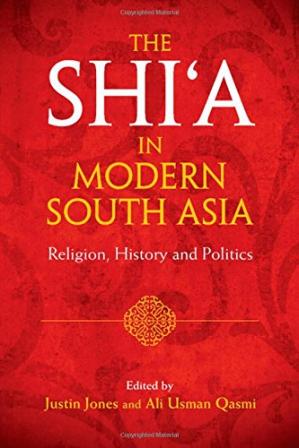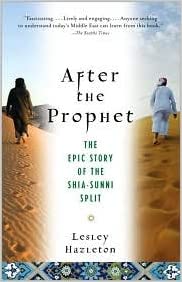Introduction
Ibn Taymiyyah’s Turbulent Era
Ibn Taymiyyah’s thoughts and writings cannot be fully appreciated without understanding the complex historical context of the time in which he lived. His era was marked by severe social and political upheavals, religious fragmentation, and existential threats to the Muslim world. The Mamluk period, during which he rose to prominence, was a time of significant turmoil and transformation that deeply influenced not only his personal philosophy but also the broader trajectory of Islamic history. As historian Carl Brockelmann (1868–1956) notes, “The Mamluk period was a watershed in Islamic history, marked by relentless strife but also by remarkable resilience” (Brockelmann, 1939).
The Mongol Invasions and the Collapse of the Abbasid Caliphate
A defining feature of Ibn Taymiyyah’s time was the series of Mongol invasions that swept through Central Asia and the Middle East. Known for their ruthless conquests, the Mongols wreaked havoc across the region, culminating in the catastrophic fall of Baghdad in 1258 CE, which marked the end of the Abbasid Caliphate. This event sent shockwaves throughout the Muslim world, leading to a crisis of identity and authority. Historian Bernard Lewis (1916–2018) writes, “The fall of Baghdad was not just the collapse of a city, but the demise of a symbol of Islamic unity and power” (Lewis, 2002). Similarly, Peter Jackson emphasizes the broader impact, stating, “The Mongol devastation of Islamic lands was not merely a conquest; it represented an existential crisis that struck at the heart of Muslim civilization” (Jackson, 2017).
In the wake of this calamity, a new wave of so-called reformists within Sunni Islam emerged. These reformists blamed the religious pluralism and interpretive diversity of the Abbasid era for the political decline of Muslim societies, rather than focusing on the empire’s internal economic weaknesses and power struggles. They condemned the mainstream Islamic scholars of the time, accusing them of fostering shirk (polytheism), bid’ah (innovation), and misguidance through their interpretations of the Qur’an and Sunnah. As Ibn Taymiyyah himself argued, “Deviation from the path of the Salaf is the root of all decline” (Ibn Taymiyyah, n.d., Majmu’ al-Fatawa).
Ibn Taymiyyah, whose full name was Taqi ad-Din Ahmad ibn Taymiyyah (1263–1328), was a prominent Islamic scholar, theologian, and jurist during this turbulent period. Aligning with reformist sentiments, he vehemently opposed the integration of Sufism within Islam. He declared jihad not only against the Mongols but also against mainstream Muslim groups, labeling them as misguided, polytheists, and innovators. This combative stance extended beyond the battlefield, influencing his writings that emphasized the need for purity in Islamic practice and resistance against external and internal threats alike. He wrote, “The Mongols, despite their outward conversion to Islam, are not true Muslims, for they continue to govern by the laws of Genghis Khan” (Ibn Taymiyyah, n.d., Al-Siyasah al-Shar’iyah).
The Mamluks: Defenders of the Faith
Amidst this chaos, the Mamluk Sultanate emerged as a crucial defender of the Muslim world, especially after their decisive victory over the Mongols at the Battle of Ain Jalut in 1260 CE. This victory was the first significant defeat suffered by the Mongols in their westward expansion and effectively saved Muslim territories from further devastation. The Mamluks, thus, positioned themselves as the protectors of Sunni orthodoxy, using their military prowess and religious patronage to legitimize their rule. David Morgan (1945–2019) describes Ain Jalut as “not just a battle; it was a turning point that signaled the resilience of the Islamic world against invaders, galvanizing a fragmented society under the Mamluk banner” (Morgan, 1986). As Michael Chamberlain (1950–2020) observed, “The Mamluks saw themselves not just as rulers but as guardians of the faith, a role that required both military and spiritual vigilance” (Chamberlain, 1994).
However, Ibn Taymiyyah’s relationship with the Mamluk authorities was fraught with tension. His outspoken criticism of the state’s support for pluralistic religious traditions and his rejection of the legitimacy of theological diversity often put him at odds with the ruling elite. He advocated for ijtihad (independent reasoning) and rejected taqlid (blind following), which clashed with the Mamluks’ efforts to maintain religious and social order through established traditions. In his view, “Blind imitation is the enemy of true knowledge and the bane of Islamic revival” (Ibn Taymiyyah, n.d., Iqtidha’ al-Sirat al-Mustaqim).
Internal Religious Diversity and Ibn Taymiyyah’s Opposition
One of the most contentious aspects of Ibn Taymiyyah’s philosophy was his fierce opposition to the religious diversity and pluralism within the Muslim world. During his time, the Mamluk society was a mosaic of various theological schools, legal traditions, and sects, including both Sunni and non-Sunni groups like Twelver Shi’a, Ismailis, Christians, and Jews, all coexisting within the empire. Mainstream Sunni scholars generally accepted the existence of differing viewpoints as a natural part of religious discourse. As George Makdisi (1920–2002) notes, “Medieval Islamic society, especially under the Mamluks, was characterized by a remarkable tolerance for a variety of religious and legal traditions” (Makdisi, 1981).
Ibn Taymiyyah, however, sought to dismantle this pluralistic framework, advocating for a strict, monolithic interpretation of Islam based on his literalist readings of the Qur’an and Hadith. He not only opposed the dominant Ash’ari theological school but also condemned other Sunni and Shi’a sects as un-Islamic, branding them as heretical, polytheistic, and misguided. His extreme measures included organizing armed groups to enforce his views, rejecting allegorical interpretations of sacred texts, and denouncing widely accepted practices such as Tawassul (intercession) and Istighatha (seeking help through saints). He stated, “To seek intercession through anyone but Allah is to deviate from the straight path” (Ibn Taymiyyah, n.d., Kitab al-Tawhid). Further, he argued that “The Sufis have introduced innovations that distort the pure worship of Allah, leading people astray from the true path as outlined by the Salaf” (Ibn Taymiyyah, n.d., Al-Furqan bayna Awliya’ ar-Rahman wa-Awliya’ ash-Shaytan).
Mamluk Political Dynamics and the Clash with Ibn Taymiyyah
The Mamluk political landscape was a complex interplay of power, military strength, and religious legitimacy. As a dynasty founded by former slave soldiers, the Mamluks relied on their role as defenders of the faith to cement their authority, actively promoting Sunni orthodoxy through the sponsorship of religious scholars and institutions. Their efforts included building mosques and madrasas and supporting the spread of Sunni teachings as a means to unify their diverse subjects.
Ibn Taymiyyah’s uncompromising stance against state-supported religious traditions and his broader critique of societal diversity often led to confrontations with Mamluk authorities. His advocacy for a return to the practices of the Salaf (the early generations of Muslims) and his relentless push for religious conformity challenged the Mamluks’ broader strategy of balancing religious and political stability. Marshall Hodgson (1922–1968) explains, “Ibn Taymiyyah’s reformist zeal clashed with the Mamluk’s pragmatic approach to governance, which sought to accommodate the religious mosaic of their empire” (Hodgson, 1974). As a result, he faced multiple imprisonments and was seen by many as a disruptive force within the Islamic community. Ulrich Haarmann (1942–1999) adds, “The Mamluk authorities, while acknowledging Ibn Taymiyyah’s fervor, often viewed his rigid stances as destabilizing, posing risks to the delicate balance of religious unity they sought to maintain” (Haarmann, 1998).
Revival of Khawarij Tendencies
One of the most controversial legacies of Ibn Taymiyyah was his approach to takfir (the practice of declaring fellow Muslims as unbelievers), which echoed the divisive doctrines of the Khawarij—a historical sect notorious for its rigid and exclusionary stance on Islamic belief. Ibn Taymiyyah’s broad application of takfir against those he viewed as engaging in shirk or bid’ah, including the Mongol rulers and certain Mamluk authorities, was perceived by many contemporary scholars as a dangerous revival of these schismatic tendencies. In his own words, “Those who govern by any law other than that revealed by Allah are themselves unbelievers” (Ibn Taymiyyah, n.d., Majmu’ al-Fatawa). Khaled Abou El Fadl notes, “By labeling fellow Muslims as unbelievers, Ibn Taymiyyah tread a perilous path that historically paralleled the doctrines of the Khawarij, sowing discord within the ummah” (Abou El Fadl, 2001).
This approach not only threatened the unity of the Muslim ummah but also laid the ideological groundwork for future extremist and sectarian movements. His fatwas on jihad and excommunication became tools for later groups to justify violence against those they deemed as deviants from their interpretation of Islam. Historian Jonathan A.C. Brown notes, “The legacy of Ibn Taymiyyah’s takfir has been one of the most contentious aspects of his thought, influencing extremist ideologies centuries after his death” (Brown, 2009).
Conclusion
The historical context of Ibn Taymiyyah’s life was marked by invasions, internal religious disputes, and complex political dynamics that significantly shaped his thought and the controversies surrounding his legacy. His opposition to the religious pluralism and tolerance that had evolved over centuries within Muslim societies set him apart from his contemporaries, as he vehemently condemned any form of theological diversity as contrary to the true teachings of Islam. Mainstream Sunni scholars, both during his time and thereafter, distanced themselves from his extreme positions, often associating his ideology with the Khawarij, a group long considered outside the bounds of orthodox Sunni Islam.
Despite this, Ibn Taymiyyah’s legacy continued to evolve, especially during the colonial period and with the rise of Islamic revivalist movements such as the Salafi and Deobandi traditions. His ideas were reframed as isolated yet principled stands against innovation and polytheism, gradually gaining acceptance under the patronage of powerful state actors like the Saudi monarchy. Madawi Al-Rasheed notes, “The elevation of Ibn Taymiyyah to the status of a reformist icon is a modern phenomenon, driven by geopolitical and ideological motives rather than a reflection of his historical reception” (Al-Rasheed, 2010). This shift transformed Ibn Taymiyyah from a controversial figure into an emblem of reform, celebrated as a champion of pure monotheism and a staunch defender of Islamic orthodoxy. As Yvonne Yazbeck Haddad observes, “The modern rehabilitation of Ibn Taymiyyah reflects broader ideological shifts within Sunni Islam, where his rigid stances are now often recast as necessary responses to historical crises” (Haddad, 1993).
References
- Abou El Fadl, K. (2001). Rebellion and Violence in Islamic Law. Cambridge University Press.
- Al-Rasheed, M. (2010). A History of Saudi Arabia. Cambridge University Press.
- Brockelmann, C. (1939). History of the Islamic Peoples.
- Brown, J. A. C. (2009). Hadith: Muhammad’s Legacy in the Medieval and Modern World. Oneworld Publications.
- Chamberlain, M. (1994). Knowledge and Social Practice in Medieval Damascus, 1190-1350. Cambridge University Press.
- Haarmann, U. (1998). The Mamluks and the Islamic World. Princeton University Press.
- Haddad, Y. Y. (1993). The Contemporary Islamic Revival: A Critical Survey and Bibliography. Greenwood Press.
- Hodgson, M. G. S. (1974). The Venture of Islam, Volume 2: The Expansion of Islam in the Middle Periods. University of Chicago Press.
- Ibn Taymiyyah. (n.d.). Al-Furqan bayna Awliya’ ar-Rahman wa-Awliya’ ash-Shaytan.
- Ibn Taymiyyah. (n.d.). Al-Siyasah al-Shar’iyah.
- Ibn Taymiyyah. (n.d.). Iqtidha’ al-Sirat al-Mustaqim.
- Ibn Taymiyyah. (n.d.). Kitab al-Tawhid.
- Ibn Taymiyyah. (n.d.). Majmu’ al-Fatawa.
- Jackson, P. (2017). The Mongols and the Islamic World: From Conquest to Conversion. Yale University Press.
- Lewis, B. (2002). The Middle East: A Brief History of the Last 2,000 Years. Scribner.
- Makdisi, G. (1981). The Rise of Colleges: Institutions of Learning in Islam and the West. Edinburgh University Press.
- Morgan, D. (1986). The Mongols. Blackwell.






